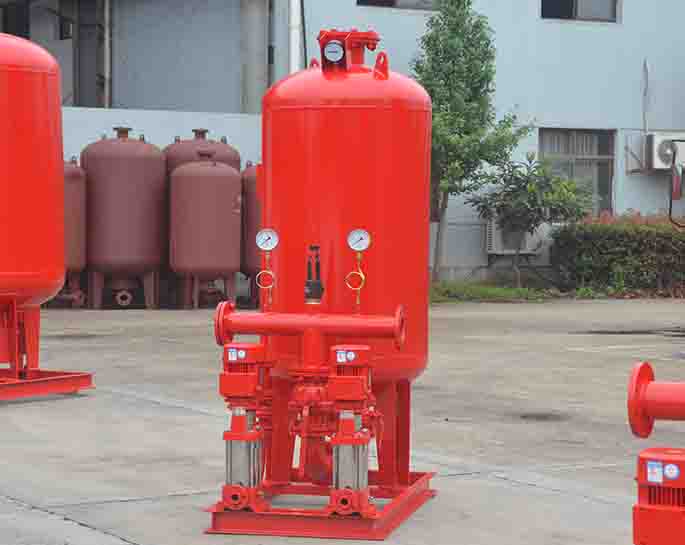Fire pump, working principle of water ring vacuum pump and knowledge guide
Jan 31, 2023
Share:
Fire pumps, water ring pumps When the working wheel rotates in the pump body, a water ring and a working chamber are formed. The water ring and the working wheel form a crescent-shaped space. The volume of the half crescent on the right becomes larger from small to form the suction chamber. The volume of the half crescent on the left changes from large to small, forming a compression process (equivalent to an exhaust chamber). The pumped gas enters the suction chamber through the intake pipe and the intake port. Further rotation of the rotor causes the gas to be compressed and discharged through the exhaust port and the exhaust pipe. Exhausted gas and water droplets enter the water tank through the exhaust pipe, at this time the gas is separated from the water, the gas is discharged into the atmosphere through the pipe, and the water enters the pump from the water tank, or is discharged into the drainage device through the pipeline 11.
The compression ratio of the fire pump and the water ring pump is determined by the end position of the suction port of the pump and the start position of the exhaust port. Because the end position of the suction port determines the volume of the inhaled gas in the suction chamber; and the start position of the exhaust port determines the volume of compressed gas during exhaust. For the water ring pump whose structural size has been determined, its compression ratio can be obtained.
As the name implies, fire pumps are used in firefighting. They are divided into different types according to different classification methods. They are widely used in environmental protection, water treatment, firefighting and other departments to pump various liquids due to their fully sealed, leak-free, and corrosion-resistant characteristics. , It is the ideal pump for creating leak-free, pollution-free civilized workshops and civilized factories.

Selection of fire pump
The basis for the selection of fire pumps should be based on the process flow, water supply and drainage requirements, and be considered from five aspects, namely, liquid delivery volume, device lift, liquid properties, pipeline layout, and operating conditions. Fire pumps are mainly divided into vertical and horizontal types. The flow rate of the conveying liquid is one of the important performance data for pump selection. It is directly related to the production capacity of the entire device. The working conditions of the fire pump: flow rate: 2~1400m3/h, Head: 5~130m, maximum working pressure of the system: ≤1.6MPa, working temperature: -15℃~+80℃.
Main purpose of fire pump
With its full seal, no leakage, and corrosion resistance, it is widely used in environmental protection, water treatment, fire protection and other departments to pump various liquids. It is an ideal pump for building non-leakage, non-pollution civilized workshops and civilized factories.
The compression ratio of the fire pump and the water ring pump is determined by the end position of the suction port of the pump and the start position of the exhaust port. Because the end position of the suction port determines the volume of the inhaled gas in the suction chamber; and the start position of the exhaust port determines the volume of compressed gas during exhaust. For the water ring pump whose structural size has been determined, its compression ratio can be obtained.
As the name implies, fire pumps are used in firefighting. They are divided into different types according to different classification methods. They are widely used in environmental protection, water treatment, firefighting and other departments to pump various liquids due to their fully sealed, leak-free, and corrosion-resistant characteristics. , It is the ideal pump for creating leak-free, pollution-free civilized workshops and civilized factories.

Selection of fire pump
The basis for the selection of fire pumps should be based on the process flow, water supply and drainage requirements, and be considered from five aspects, namely, liquid delivery volume, device lift, liquid properties, pipeline layout, and operating conditions. Fire pumps are mainly divided into vertical and horizontal types. The flow rate of the conveying liquid is one of the important performance data for pump selection. It is directly related to the production capacity of the entire device. The working conditions of the fire pump: flow rate: 2~1400m3/h, Head: 5~130m, maximum working pressure of the system: ≤1.6MPa, working temperature: -15℃~+80℃.
Main purpose of fire pump
With its full seal, no leakage, and corrosion resistance, it is widely used in environmental protection, water treatment, fire protection and other departments to pump various liquids. It is an ideal pump for building non-leakage, non-pollution civilized workshops and civilized factories.

.png)
.png)

.png)


